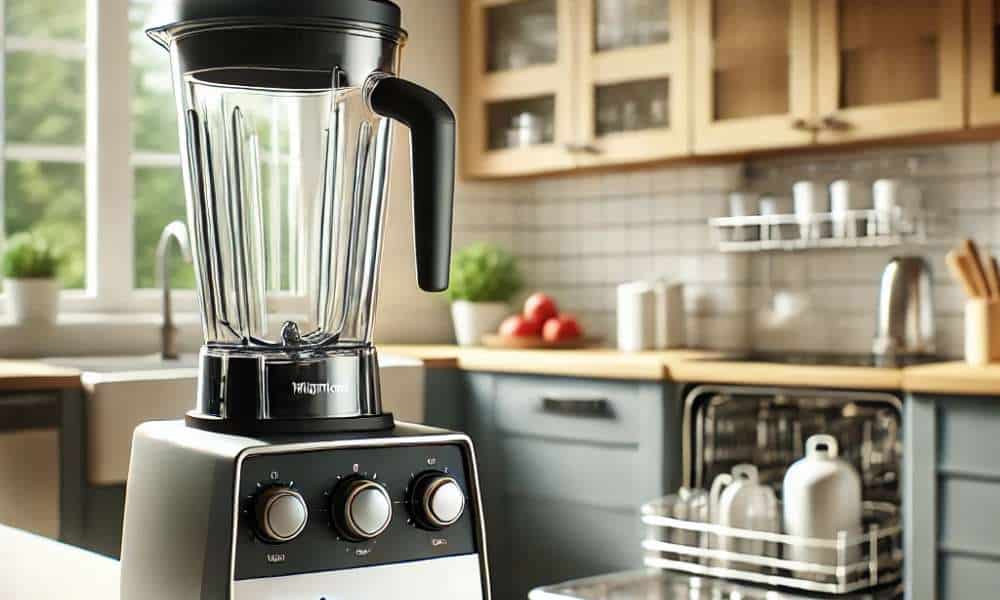The allure of modern kitchen gadgets lies in their promise to simplify life, from preparing meals to cleaning up afterward. Among these, the Vitamix blender holds a special place for its unparalleled performance and versatility. Yet, even the most sophisticated appliances come with their own care instructions—leading to the common question: Can a Vitamix blender go in the dishwasher?
For busy individuals, the thought of tossing a blender into the dishwasher for effortless cleaning is tempting. However, improper cleaning methods can jeopardize the durability and performance of this high-end appliance. This article delves into whether your Vitamix is dishwasher-safe, offering practical insights to help you care for it efficiently.
1. Understanding Vitamix Blenders
Renowned for their powerful motors and durable design, Vitamix blenders are the epitome of culinary engineering. Originally designed for professional kitchens, they have become a staple in households that value performance and longevity.
Each Vitamix model is crafted from premium materials, such as BPA-free plastic containers and stainless steel blades. These features make them resistant to wear and tear, but not impervious to improper cleaning techniques. Some newer models boast innovations like dishwasher-safe components, while classic designs rely on manual or self-cleaning methods to maintain their integrity.
2. Are Vitamix Blenders Dishwasher-Safe?
The answer is nuanced. While certain parts of this blender, such as the lid and tamper, may be labeled as dishwasher-safe, the container itself often comes with restrictions. High temperatures and harsh detergents can degrade the plastic over time, leading to discoloration, warping, or a weakened structure.
For newer models like the Vitamix Ascent Series, the containers are designed to withstand dishwasher cycles. However, even in these cases, manufacturers recommend occasional manual cleaning to preserve the blender’s pristine condition.
To avoid mishaps, always consult the user manual for your specific Vitamix model before placing any parts in the dishwasher.
3. Risks of Putting Your Vitamix in the Dishwasher
Though convenient, using a dishwasher for your Vitamix can pose significant risks:
Material Degradation: Prolonged exposure to hot water and detergents may cause the plastic to warp, dull, or crack.
Blade Integrity: The high-pressure jets in a dishwasher can dull the blades over time, compromising their cutting efficiency.
Motor Base Exposure: While not dishwasher-safe, accidental splashes during cleaning cycles can damage the motor base, leading to costly repairs or replacements.
By understanding these risks, you can make informed choices about how best to clean your blender.
4. The Self-Cleaning Feature
One of the most attractive features of Vitamix blenders is their self-cleaning capability. This simple yet effective method eliminates the need for prolonged scrubbing or worrying about damaging parts. Here’s how it works:
- Add warm water (about halfway) and a drop of dish soap into the container.
- Secure the lid tightly and start the blender on high for 30-60 seconds.
- Rinse the container thoroughly.
This method effectively removes residue from the blades and sides of the container without any need for disassembly. Unlike the dishwasher, self-cleaning helps maintain the integrity of the blender’s components while ensuring they are sanitized. The self-cleaning feature is a time-saver, typically requiring less effort than handwashing, and offers a much safer alternative to the dishwasher.
5. Alternative Cleaning Methods
For those who prefer a more hands-on approach, there are other cleaning methods that provide a deep clean while preserving the integrity of the blender.
Hand Washing Tips
When handwashing your Vitamix, use warm, soapy water and a soft sponge to avoid scratching the container. Be particularly careful around the blades—consider using a brush to gently scrub the sharp edges. Avoid harsh abrasives that can scratch the container’s surface.
Deep Cleaning Process
For tougher residues, such as dried nut butter or smoothie stains, fill the container with warm water and add a tablespoon of baking soda or white vinegar. Let it sit for 15-20 minutes before scrubbing. If residue persists, consider using a specialized blender cleaning solution, available in most kitchenware stores.
Regular cleaning prevents odors, stains, and mold growth, ensuring your Vitamix stays in top working condition.
6. How to Extend the Lifespan of Your Vitamix Blender
Taking care of your Vitamix extends its longevity and performance. Follow these simple maintenance tips:
- Routine Cleaning: Clean your Vitamix after each use to prevent buildup. For everyday maintenance, the self-cleaning function is ideal, but deep cleaning should be done periodically.
- Proper Storage: Store your Vitamix in a dry, cool place, and avoid storing it with the lid tightly sealed to prevent odors from accumulating.
- Regular Inspections: Check the blades for signs of dulling or wear. If the motor feels weak, consult Vitamix customer service for maintenance advice.
Avoid dropping the container or subjecting it to extreme temperatures, as this could lead to cracks or warping over time.
Conclusion
This blender is a high-quality, versatile tool that requires the right care to maintain its performance. While the container and lid may be dishwasher-safe, the motor base should always be cleaned by hand. The self-cleaning feature is a convenient and safe alternative, offering excellent results without risking damage to your blender. By following the recommended care guidelines, you can ensure your Vitamix remains a reliable companion in your kitchen for years to come.
